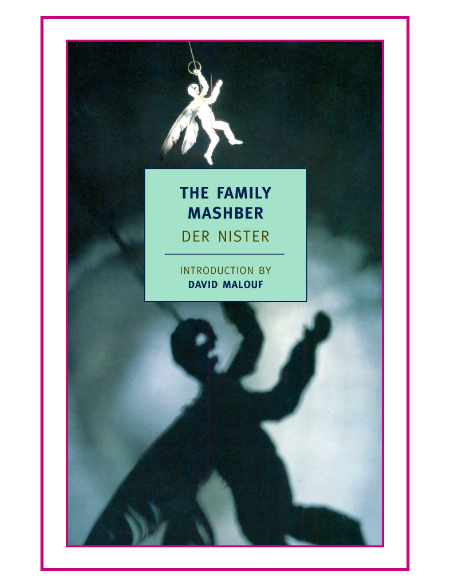
The Family Mashber
by Der Nister, 1939
What Makes The Family Mashber one of the Greatest Works of Yiddish Literature
By Zachary Solomon
It was a Saturday in February of 1949 when the Soviet secret police finally came for Pinchus Kahanovitch. He had been waiting for their knock for a long time, and had taken precautions.
A final holdout of the Stalinist purges of Yiddish culture, Kahanovitch, who published under the pen name Der Nister (“The Hidden One”), knew his time was near. His masterpiece, a sprawling and evolving family epic called The Family Mashber, had just seen its second volume published in New York the year before. Its first volume was published in Moscow in 1939. Before deporting him to a labor camp for “hostile nationalistic activity,” like so many of his Yiddish-artist cohort, the police asked after his manuscripts. Der Nister told them: “Forgive me, gentlemen, the matter is none of your concern. It was not for you that I wrote my manuscripts and they remain in a safe place.”
That third volume, like Der Nister himself, is gone. But what we do have of The Family Mashber is one of the greatest works of Yiddish literature.
The novel follows the Mashber family in their Polish-Ukrainian town of “N,” and how, over the course of one year in the 1870s, they see their comfort and happiness and financial prosperity evaporate. The Mashbers of note are three brothers: Luzi, a mystic and spiritual seeker; Alter, a pious epileptic; and Moshe, around whom the novel largely revolves—the savvy businessman whose wealth is an indelible cornerstone for the entire community. Two unprompted events precipitate the town’s downfall, one including the maiming of the cheap portrait of the czar that hangs in the Jewish inn, an act of unpatriotic desecration that comes with enormous ramifications for the Jews.
Meanwhile, as if financial woes weren’t enough, the town is being overrun by Bratslavers—followers of the Bratslav sect of Hasidism, known for a feverishly joyous and performative relationship with God—and Luzi Mashber joins up with them. It’s not long before the townspeople suspect the Bratslavers as the cause of their town’s hardships and attempt to drive them out.
Der Nister’s magnum opus brims with life. Now, 79 years since the first volume was published in Moscow, and 31 since its first English translation, The Family Mashber’s momentous gravity and worth still resonates.
Read an Excerpt
Get a taste of Der Nister's masterpiece with an excerpt of the first pages of The Family Mashber.
Get Your Copy
Explore More
What else was happening in Europe's Jewish communities when Der Nister wrote "The Family Mashber?" Learn all about the history of Yiddish literature in the 20th century.
Your next email in the "Great Jewish Books" series will arrive in a few days. Stay tuned to explore a seminal Jewish novel from the 1940s.






